Why invest in a domestic battery to store photovoltaic energy?
- Maximize your solar energy even at night : With a battery, you have the ability to store solar energy produced during the day for use at night. This means less dependence on the grid and therefore, potentially, savings on your electricity bills.
- Take advantage of variable pricing : Prices based on the time of consumption are in vogue (and could become more widespread). These rates are often higher during times of high demand, usually in the early evening.
- Backup : secure your power supply in the event of an EDF outage: if you lose network power, a domestic battery can back up all or part of your electrical panel, and thus ensure continuity of power supply to your home, via the solar panels in day (or night thanks to the batteries).
How does a household battery work?
A household battery works using an electrochemical mechanism that conserves energy. Think of it as an energy “sandwich”. On one side we have the anode, on the other the cathode. In the middle, a substance called an electrolyte is separated by an insulating material.
To remind you that the cathode is positive: imagine cats, often perceived in a positive way. In contrast, the anode is negative, a bit like a grumpy aunt that we might call Aunt Annette.
The electrons, carrying a negative charge, clump together at the anode. They seek to reach the cathode, which is their positively charged opposite. But the electrolyte in the middle prevents them from passing directly through the battery.
By connecting the anode and cathode with a conductor, electrons are allowed to move through them. This flow of electrons constitutes the electricity we use.
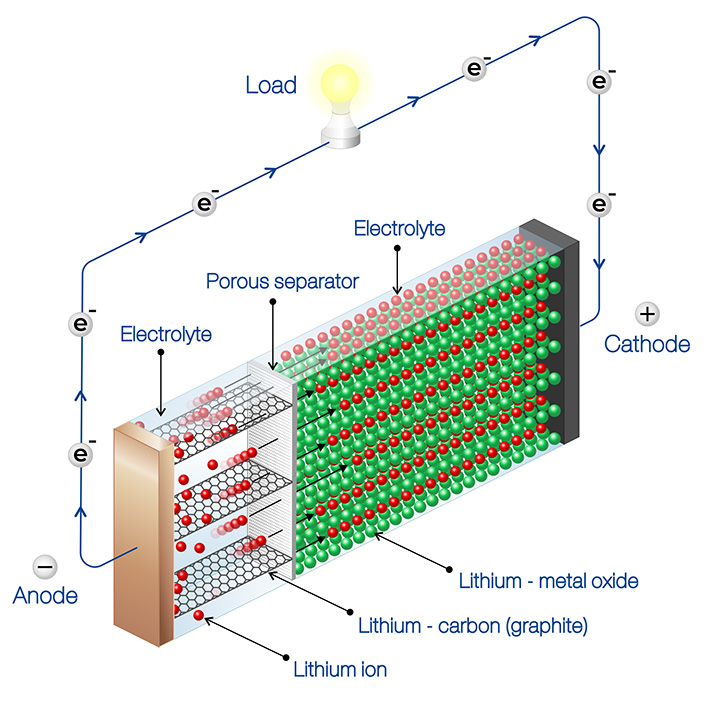
In rechargeable batteries, an external energy source allows the direction of current to be reversed. This helps conserve this energy for later use.
In a modern lithium-ion type household battery, there are many possible configurations for the cathode plates, anode plates and the separator. Typically, they are designed as a roll inside metal cylinders called cells. A home energy storage system can contain thousands of these cylindrical cells.
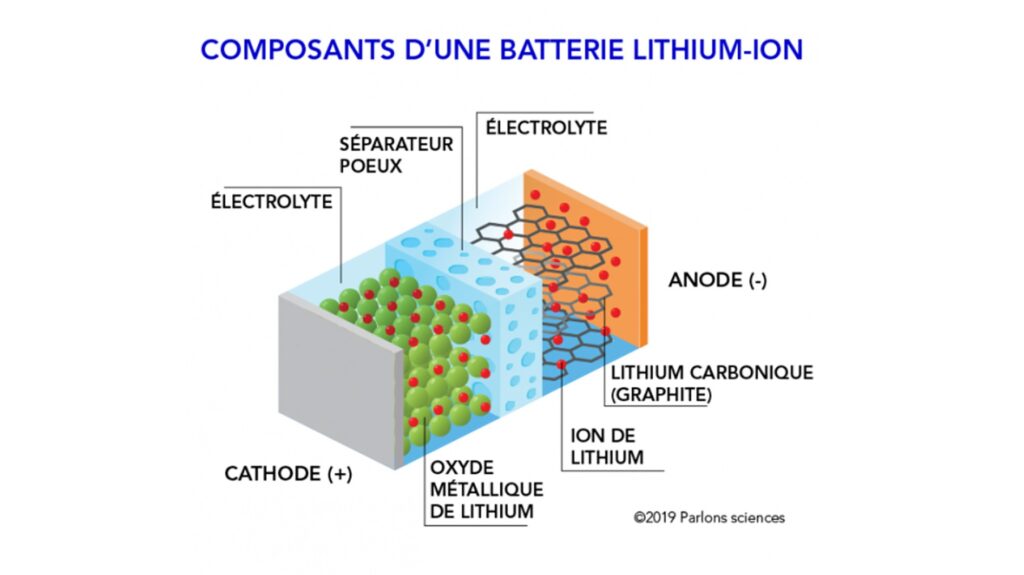
The distinction between kW and kWh: power & energy!
To illustrate the operation of a domestic battery (whether lithium, nickel-iron technology, etc.), we can think of water flowing in a pipe towards a container.
The power (kW) corresponds to the speed at which the water circulates in the pipe, entering or leaving the container.
Energy (kWh) represents the amount of water the container can hold.
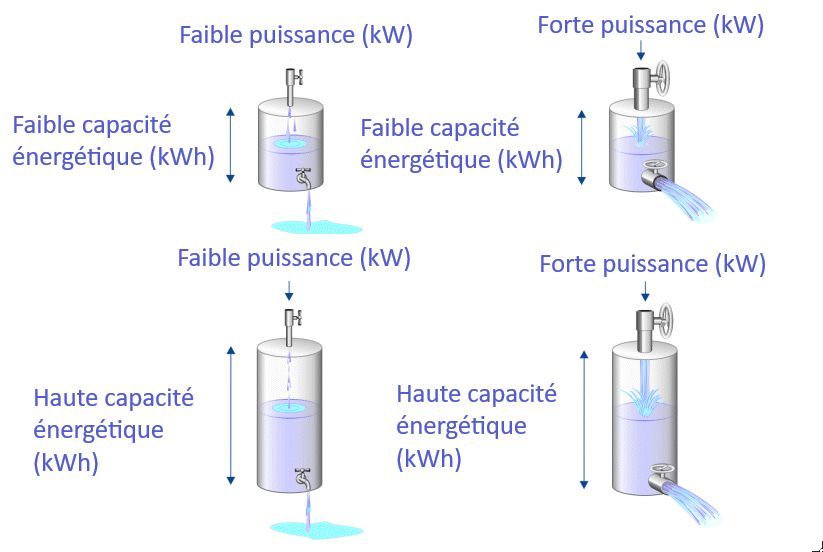
It is crucial to understand the distinction between power and energy. This may influence your choice between a suitable domestic battery and a less efficient one.
There are many solar batteries available, each offering a specific balance between power output and energy stored.
Most solar batteries offer a maximum continuous power of 4 or 5 kW. For example, my battery Pylontech US5000 delivers 5 kW maximum. If I want 10 kW of power, I will need a second battery.
It is therefore essential to know the power and energy needs of your home before choosing a battery.
If your solar battery only provides 3 kW and your home requires 5 kW, you will need to supplement with electricity from the grid. For example, I have a Finnish sauna that consumes 7 kW at home. I can't run it on just my single Pylontech US5000 battery as it only provides 5kW. So, no sauna during a power outage!
Domestic battery: Nickel-Iron, Lithium, which technology to choose?
Before 2015, installing an energy storage system often meant self-sufficient living in a remote area.
The common technology at that time was based on lead-acid. This solution required a large battery bank, typically placed in a separate space such as a shelter, and required constant care, far from the idea of a “set it up and forget about it” solution.
But, with the emergence of lithium technologies, they have gained momentum in the residential energy storage market for various reasons:
- They offer better capacities (both in terms of power delivered and depth of discharge).
- They are virtually maintenance free.
- They benefit from extended guarantees.
- They are offered at attractive prices.
- They are more compact and less bulky.
- So, currently, a large portion of residential solar batteries rely on lithium.
There are two major variants of this technology: Nickel Manganese Cobalt (NMC) and Lithium Iron Phosphate (LiFePO). As an illustration, TESLA Powerall or TESVOLT batteries are based on NMC technology.
Despite the distinct advantages of LIFEPO4 or NMC type lithium-ion batteries, Nickel-Iron and Lithium Titanate batteries are superior in terms of durability and number of possible cycles:
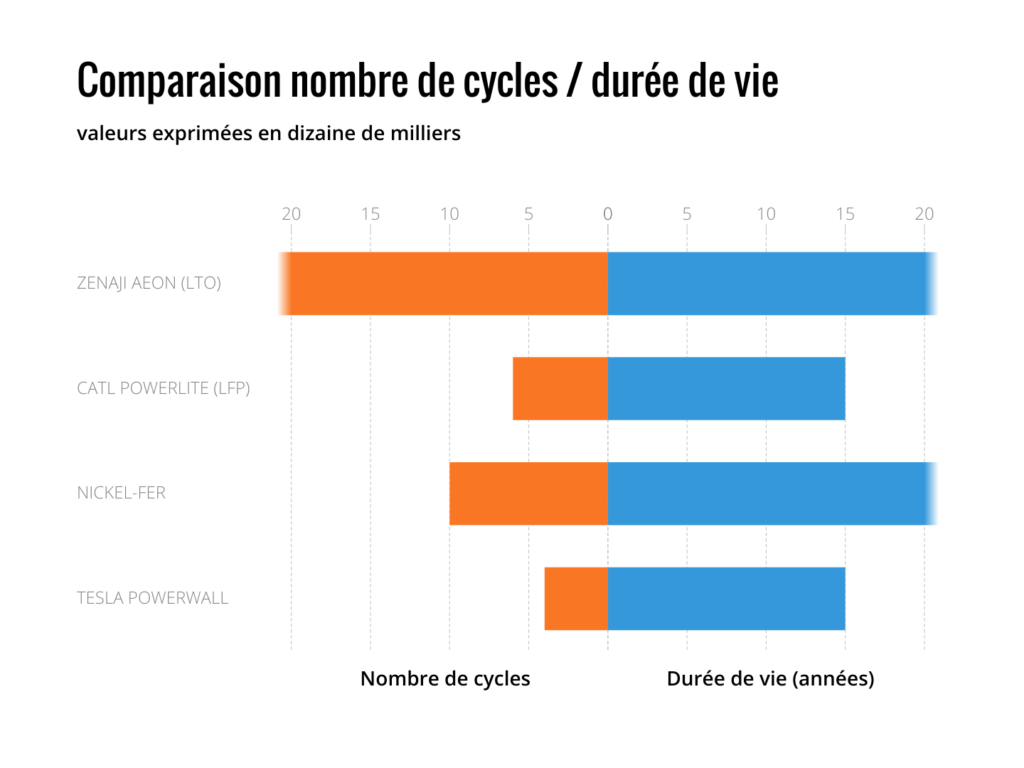
Add a domestic battery to your photovoltaic installation: AC vs DC coupling?
Batteries, on the other hand, charge and discharge using direct current. So how do you integrate home batteries into a solar system?
There are mainly two techniques:
DC coupling: This method uses a single 'hybrid inverter' to control both the solar panels and the battery. The roles of this inverter include:
- The conversion of DC electricity from the solar system into a form of DC suitable for battery charging.
- Converting the DC outputs of the battery and solar panels to the 230 volt AC current needed for the home.
- Conversion of 230 V AC current from the network to DC current, allowing the battery to be charged directly from the network if necessary.
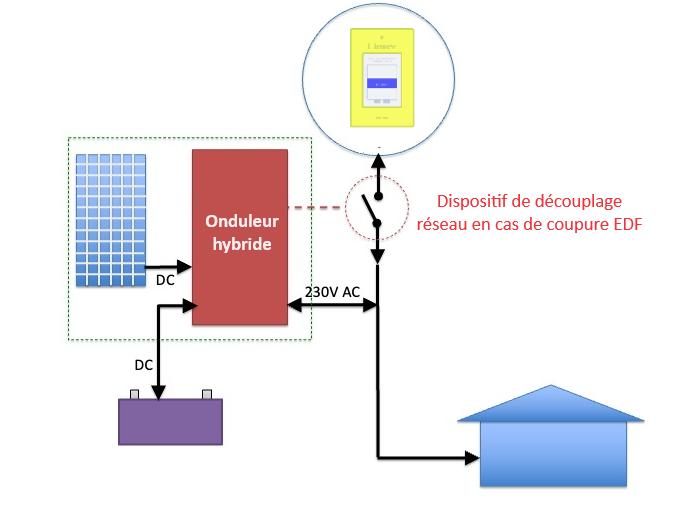
Hybrid inverters of this type are generally fully integrated (solar management function via MPPT, and battery management). An example ist the Fronius GEN24 hybrid inverter:

AC coupling:
In this scenario, a battery inverter (Victron Multiplus type) is responsible for converting the power of the solar panels into the output of the solar inverter, to recharge the batteries. So there is an additional step. During the day, self-consumption is done directly at the output of the solar inverter, only the surplus will be reinjected into the batteries for night-time use, for example.
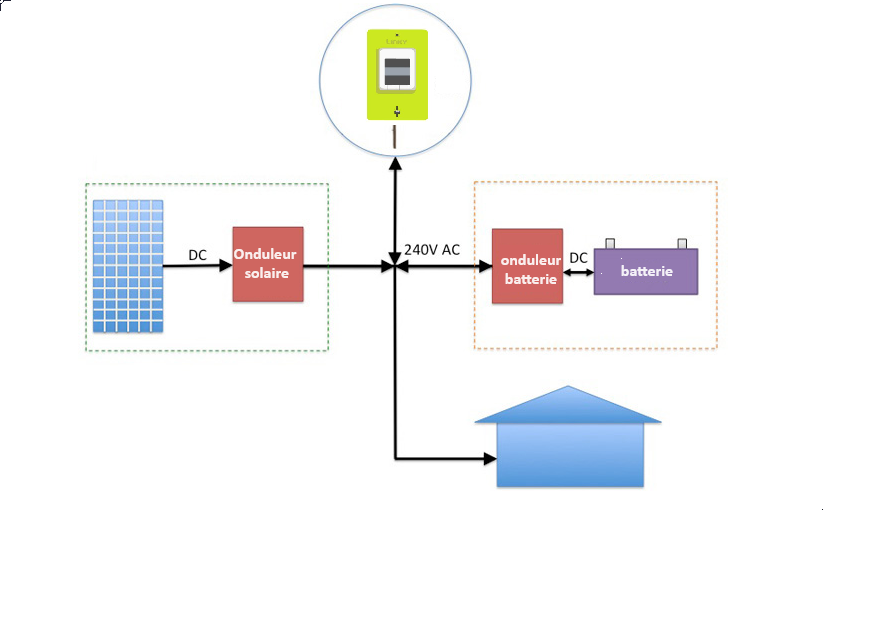
Advantages and disadvantages of each architecture?
Advantages of DC coupling : A DC coupled system has fewer intermediate steps. Fewer steps = less waste = greater efficiency.
Disadvantages of DC coupling : Batteries are often designed to work with specific hybrid inverters. So a future innovative energy storage product may not be compatible with the hybrid inverter you buy today. This is not a problem if you plan to purchase a solar + battery system in one go.
Advantages of AC Coupling : It is independent of the solar inverter. You can add an AC coupled battery to any existing solar system.
Disadvantages of AC coupling : With DC->AC->DC conversion, there are more steps, making it slightly less efficient. Another limitation of AC coupling concerns the rules regarding system size. Indeed, if you have, for example, 5 kW of solar panels already installed, you will need to install a battery inverter (Victron Multiplus for example) of at least equivalent power, to respect the 1:1 sizing ratio.
